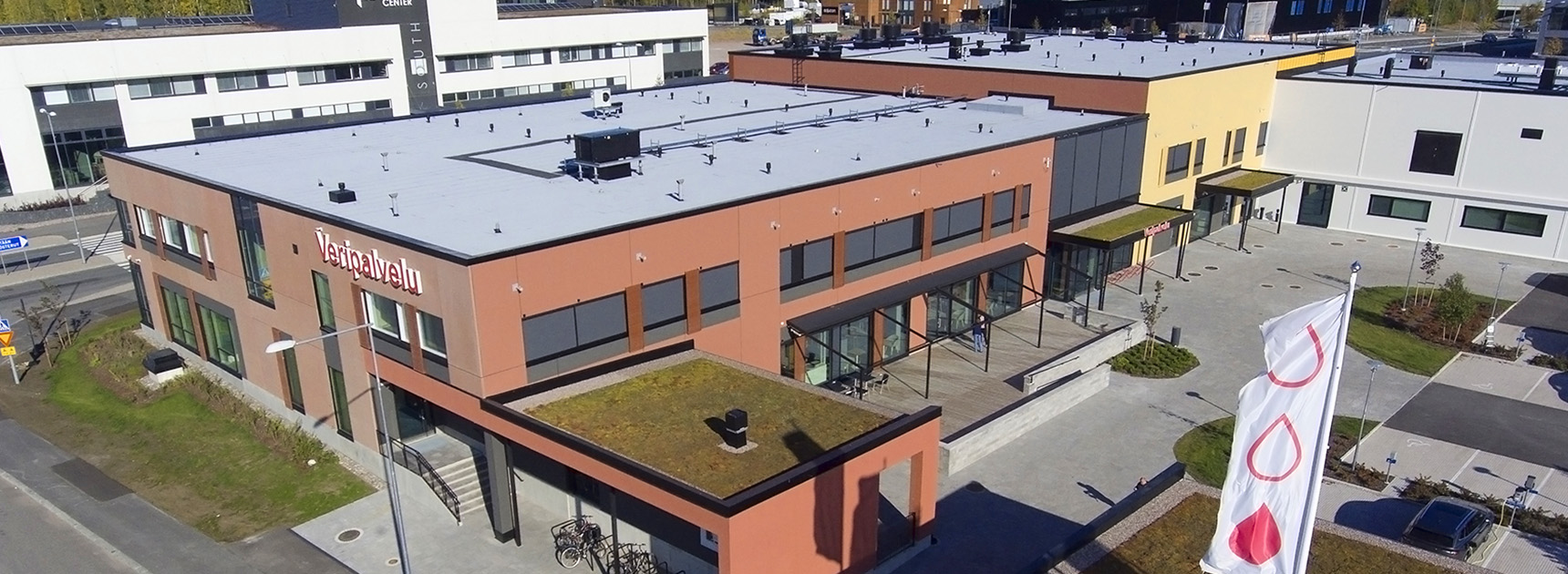Financial management
The Blood Service is a non-profit organisation. Its activities are financed by the sales of products and services to healthcare organisations. The work of the Blood Service is not supported by public funds, profits from other Red Cross activities, or any other external sources except for research grants or targeted funding for specific agreed projects. Any financial surplus is not shared but instead used to ensure the continuation and development of activities.

Turnover was €57.4 million, 7.4 % up on the previous year. The demand for blood products was lower than in 2022, whereas Stem Cell Registry sales were significantly up. Other operating revenues were €1.7 million, 33.7 % down on the previous year. Material and subcontracting expenses were up by 2.3 % and personnel costs 3.7 %. Other expenses were 14.5 % down, mainly due to lower real estate and rental costs, as the relocation and transformation project of the headquarters was completed by the end of 2022.
As in 2021 and 2022, our operating result showed a deficit but the strong rise in the securities market turned the overall result profitable. The Blood Service’s internal financial result was €40,442.
At the end of the financial period, the Blood Service’s internal balance sheet shows total capital of €81.5 million. €22.0 million of this is in an independent fund of the Finnish Red Cross, the purpose of which is to support research and development activities at the Blood Service. €55.1 million was invested in securities, and the bank balance was €15.5 million. A solid balance sheet will secure the continuity of the Blood Service’s critical functions for months with no disruptions even in the event of severe disturbances.
The Blood Service prepares an internal profit and loss account and balance sheet on its operations. The Blood Service’s financial result is included in that of the Finnish Red Cross, on which no auditor’s report had been issued at the date of signing the Blood Service’s balance sheet book.
Turnover by product group (million euros)
Blood products account for most of the Blood Service’s turnover.
| 2022 | 2023 | Change | Percentage of turnover | |
|---|---|---|---|---|
| Blood products | 35.0 | 36.2 | +3.4 % | 63 % |
| Laboratory tests | 5.8 | 6.3 | +8.7 % | 11 % |
| Plasma material | 6.2 | 6.8 | +9.9 % | 12 % |
| Cell and tissue therapy services | 3.0 | 4.5 | +48.1 % | 8 % |
| Medicines | 2.9 | 3.1 | +7.3 % | 5 % |
| Other | 0.6 | 0.5 | -2.9 % | 1 % |
| Total | 53.4 | 57.4 | +7.4 % |
Cost distribution, 2023 (%)
Personnel costs are the Blood Service’s biggest single cost item.
| Personnel costs | 45 % |
| Materials and subcontracting | 22 % |
| ICT | 7 % |
| Rents (premises and equipment) | 7 % |
| Investment expenses | 6 % |
| Facility and equipment maintenance | 3 % |
| Logistics | 3 % |
| Other | 7 % |
Cost breakdown for one bag of blood, 2023 (%)
The cost of a blood product consists of several factors.
| Blood donation activities | 64 % |
| Laboratory activities | 17 % |
| Production | 11 % |
| Storage and transportation | 6 % |
| Medical support | 2 % |